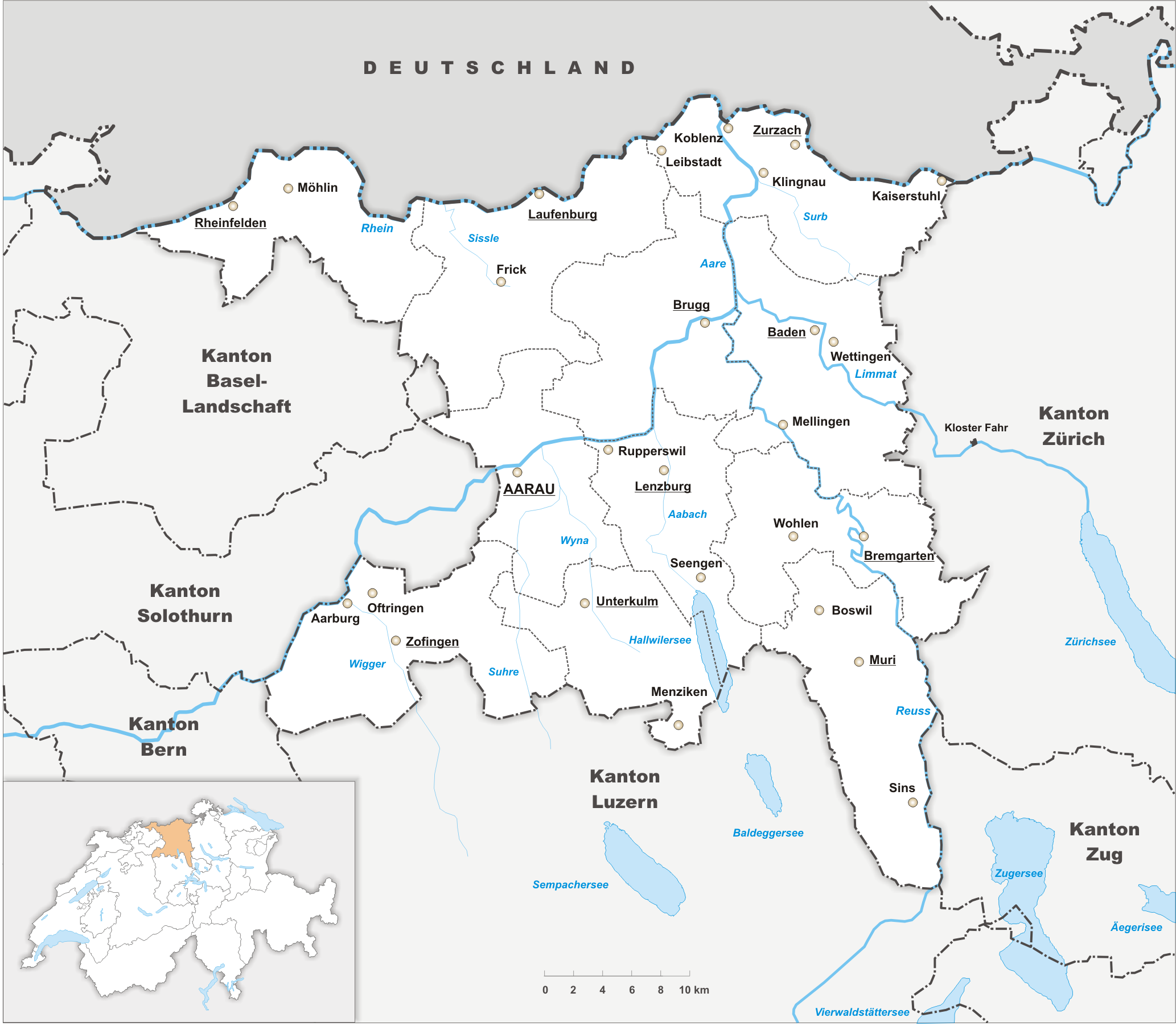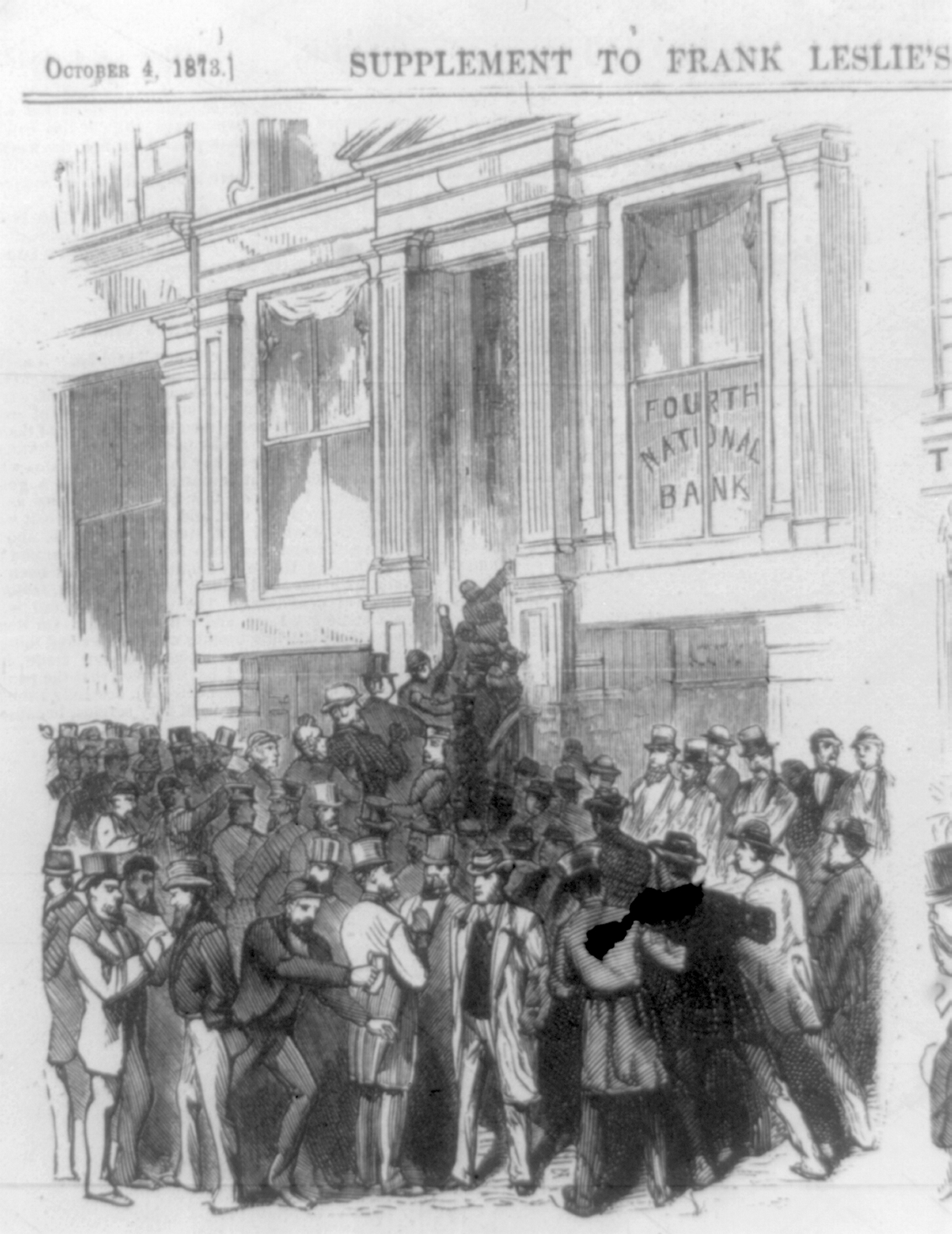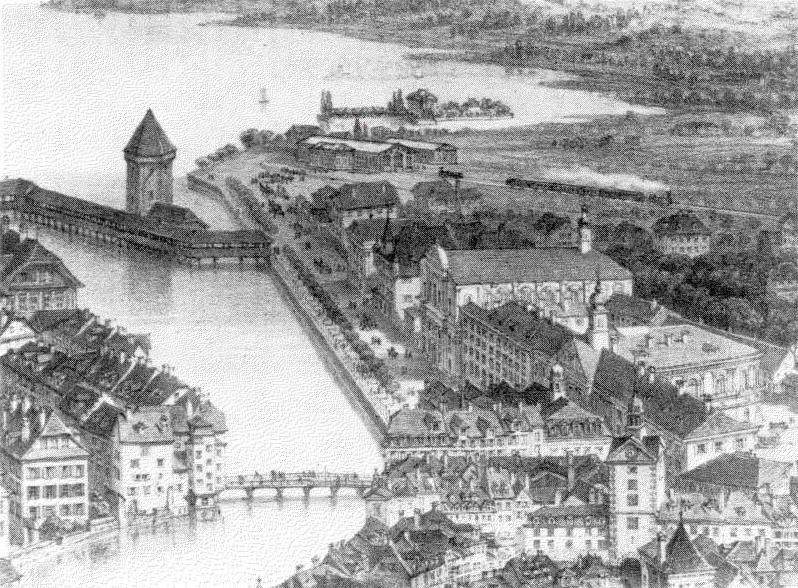|
Zofingen–Wettingen Railway Line
The Zofingen–Wettingen railway line is a standard-gauge line in Switzerland. It was opened on 6 September 1877 between Zofingen and Baden Oberstadt together with the Aarau–Suhr railway by the Swiss National Railway (''Schweizerische Nationalbahn''; SNB). The opening of the adjacent Baden Oberstadt–Wettingen section together with the Wettingen–Effretikon railway, which represented its continuation to the east, was delayed until 15 October 1877 due to construction delays at the Limmat bridge. The SNB went bankrupt in 1878, after which the line was acquired by the Swiss Northeastern Railway (''Schweizerische Nordostbahn''; NOB) from the bankrupt estate. The NOB became part of the Swiss Federal Railways with the nationalisation of the company in 1902. History The line was built by the SNB with one track and was intended to compete with the Baden–Aarau railway of the NOB. The SNB wanted the line from Lake Constance (''Bodensee'') to western Switzerland to be as short as po ... [...More Info...] [...Related Items...] OR: [Wikipedia] [Google] [Baidu] |
Swiss Federal Railways
Swiss Federal Railways (german: link=no, Schweizerische Bundesbahnen, ''SBB''; french: link=no, Chemins de fer fédéraux suisses, ''CFF''; it, Ferrovie federali svizzere, ''FFS'') is the national railway company of Switzerland. It is usually referred to by the initials of its German, French, and Italian names, either as SBB CFF FFS, or used separately. The Romansh version of its name, ''Viafiers federalas svizras'', is not officially used. The official English abbreviation is "SBB", instead of the English acronym such as "SFR", which stands for ''Swiss Federal Railways'' itself. The company, founded in 1902, is headquartered in Bern. It used to be a government institution, but since 1999 it has been a special stock corporation whose shares are held by the Swiss Confederation and the Swiss cantons. It is currently the largest rail and transport company of Switzerland, and operates on most standard gauge lines of the Swiss network. It also heavily collaborates with ... [...More Info...] [...Related Items...] OR: [Wikipedia] [Google] [Baidu] |
Seetal Railway
The Seetal railway line (german: Seetalbahn) is a (standard-gauge) railway of the Swiss Federal Railways between Lenzburg and Lucerne in Switzerland. The line was opened in 1883 by the ''Lake Valley of Switzerland Railway Company'', which was owned by British investors, and subsequently owned by the Schweizerische Seethalbahn-Gesellschaft (SthB). As built, the line had many of the characteristics of a roadside tramway, following the parallel road almost throughout and running within the villages, separating houses from the road. Despite rebuilding to improve its safety record, much of this nature has survived to the current day. History Inception In the communities of the Seetal valley, it was hoped initially that the main line from Basel to Lucerne would be routed through the valley, but the Swiss Central Railway opted for a route via Zofingen, Sursee and Sempach. At around the same time, the engineer Theodor Lutz developed a concept for the construction of loca ... [...More Info...] [...Related Items...] OR: [Wikipedia] [Google] [Baidu] |
Canton Of Aargau
Aargau, more formally the Canton of Aargau (german: Kanton Aargau; rm, Chantun Argovia; french: Canton d'Argovie; it, Canton Argovia), is one of the 26 cantons forming the Swiss Confederation. It is composed of eleven districts and its capital is Aarau. Aargau is one of the most northerly cantons of Switzerland. It is situated by the lower course of the Aare River, which is why the canton is called ''Aar- gau'' (meaning "Aare province"). It is one of the most densely populated regions of Switzerland. History Early history The area of Aargau and the surrounding areas were controlled by the Helvetians, a member of the Celts, as far back as 200 BC. It was eventually occupied by the Romans and then by the 6th century, the Franks. The Romans built a major settlement called Vindonissa, near the present location of Brugg. Medieval Aargau The reconstructed Old High German name of Aargau is ''Argowe'', first unambiguously attested (in the spelling ''Argue'') in 795. The term ... [...More Info...] [...Related Items...] OR: [Wikipedia] [Google] [Baidu] |
Canton Of Solothurn
The canton of Solothurn or canton of Soleure (german: Kanton Solothurn rm, Chantun Soloturn french: Canton de Soleure; it, Canton Soletta) is a canton of Switzerland. It is located in the northwest of Switzerland. The capital is Solothurn. History The foundation of the village of ''Salodurum'' took place in the time of the Roman emperor Tiberius. The territory of the canton comprises land acquired by the former town, mainly in the Middle Ages. For that reason the shape of the canton is irregular and includes two exclaves along the French border, separated from the rest of the canton by Basel-Land, which form separate districts of the canton. In 1481, the canton became a member of the military alliance of the former Swiss confederation. At the end of the Reformation, Solothurn maintained its Catholic religion. Between 1798 and 1803 the canton was part of the Helvetic Republic. In 1803 Solothurn was one of the 19 Swiss cantons that were reconstituted by Napoleon ('' Mediation' ... [...More Info...] [...Related Items...] OR: [Wikipedia] [Google] [Baidu] |
Wynental And Suhrental Railway
The Wynental and Suhrental Railway (german: Wynental- und Suhrentalbahn, WSB) was a privately owned railway company in the canton of Aargau in Switzerland. It was formed by the merger of the Aarau-Schöftland Railway (german: Aarau-Schöftland Bahn, AS) with the Wynental Railway (german: Wynentalbahn, WTB) in 1958. It in turn merged with BDWM Transport in 2018 to form Aargau Verkehr (AVA). The company owned and operated the Menziken–Aarau–Schöftland railway line, a metre gauge railway line from Menziken to Schöftland via Aarau. The line continues to run, under the ownership of Aargau Verkehr. History The Wynental Railway In 1871, several municipalities in the Wynental founded a committee requesting a concession for two railway lines, from Aarau via Oberkulm to Reinach, and from Beinwil am See via Reinach to Menziken. Both were planned as standard gauge lines operated with steam engines. A year later the project was granted by the authorities of the canton Aargau, but wa ... [...More Info...] [...Related Items...] OR: [Wikipedia] [Google] [Baidu] |
Aargau Southern Railway
Aargau Southern Railway (german: Aargauische Südbahn) is a former railway company in Switzerland. Between 1873 and 1882, the Schweizerische Centralbahn (SCB) and the Schweizerische Nordostbahn (NOB) jointly built a connecting line to the Gotthardbahn. The line was operated by the SCB and ran from Rupperswil to Immensee. Branch lines ran from Wohlen to Bremgarten and from Hendschiken to Brugg. History The routes were opened in this order: * 23 June 1874: Rupperswil - Lenzburg - Hendschiken Hendschiken is a municipality in the district of Lenzburg in the canton of Aargau in Switzerland. History Hendschiken is first mentioned in 1160 as ''Hentschikon''. During the Middle Ages, the major landowners in Hendschiken included Muri Ab ... - Wohlen * 1 June 1875: Wohlen - Muri * 1 September 1876: Wohlen - Bremgarten West * 1 December 1881: Muri - Immensee * 1 June 1882: Hendschiken - Brugg In 1902, the Aargauische Südbahn (together with the SCB and NOB) became part of th ... [...More Info...] [...Related Items...] OR: [Wikipedia] [Google] [Baidu] |
German Empire
The German Empire (),Herbert Tuttle wrote in September 1881 that the term "Reich" does not literally connote an empire as has been commonly assumed by English-speaking people. The term literally denotes an empire – particularly a hereditary empire led by an emperor, although has been used in German to denote the Roman Empire because it had a weak hereditary tradition. In the case of the German Empire, the official name was , which is properly translated as "German Empire" because the official position of head of state in the constitution of the German Empire was officially a "presidency" of a confederation of German states led by the King of Prussia who would assume "the title of German Emperor" as referring to the German people, but was not emperor of Germany as in an emperor of a state. –The German Empire" ''Harper's New Monthly Magazine''. vol. 63, issue 376, pp. 591–603; here p. 593. also referred to as Imperial Germany, the Second Reich, as well as simply Germany, ... [...More Info...] [...Related Items...] OR: [Wikipedia] [Google] [Baidu] |
Panic Of 1873
The Panic of 1873 was a financial crisis that triggered an economic depression in Europe and North America that lasted from 1873 to 1877 or 1879 in France and in Britain. In Britain, the Panic started two decades of stagnation known as the "Long Depression" that weakened the country's economic leadership. In the United States, the Panic was known as the "Great Depression" until the events of 1929 and the early 1930s set a new standard. The Panic of 1873 and the subsequent depression had several underlying causes for which economic historians debate the relative importance. American inflation, rampant speculative investments (overwhelmingly in railroads), the demonetization of silver in Germany and the United States, ripples from economic dislocation in Europe resulting from the Franco-Prussian War (1870–1871), and major property losses in the Great Chicago Fire (1871) and the Great Boston Fire (1872) helped to place massive strain on bank reserves, which, in New York City ... [...More Info...] [...Related Items...] OR: [Wikipedia] [Google] [Baidu] |
Swiss Central Railway
The Swiss Central Railway (''Schweizerische Centralbahn''; SCB or S.C.B.) was one of the five major private railway companies of Switzerland. The SCB with a track length of 332 kilometres was integrated into the Swiss Federal Railways (SBB) in 1902. History The SCB based in Basel was founded on 4 February 1853 by Johann Jakob Speiser, Achilles Bischoff and Karl Geigy. The shares were mainly owned by Parisian banks. But Basel banks and the cantons of Basel-Stadt and Basel-Landschaft were also involved. The issue of shares worth Swiss Francs (CHF) 36 million and bonds worth CHF 12 million were planned. Speculation on the Paris stock exchange, however, led to a sharp fall in prices. Thus, the value of the SCB shares fell from CHF 500 to 200 and the share capital finally amounted to only CHF 14.5 million. The cantons of Luzern and Bern and Bernese municipalities rescued the company by buying shares and subsidies totaling CHF 6 million. The main goal of the SCB was the cons ... [...More Info...] [...Related Items...] OR: [Wikipedia] [Google] [Baidu] |
Gäu Railway (Switzerland)
In the south German language (of the Alemannic-speaking area, or in Switzerland), a ''gäu'' landscape (''gäulandschaft'') refers to an area of open, level countryside. These regions typically have fertile soils resulting from depositions of loess (an exception is the ''Arme Gäue'' Poor Gäus"of the Baden-Württemberg Gäu). The intensive use of the ''Gäu'' regions for crops has displaced the originally wooded countryside (→'' climax vegetation'' – in contrast with the steppe heath theory and disputed megaherbivore hypothesis). The North German equivalent of such landscapes is ''börde.'' See also * Gau (territory) – also gives the etymology and language history of ''Gäu'' * Gäu – regions with the name * Natural regions referred to as ''Gäu plateaus'': ** Neckar and Tauber Gäu Plateaus ** Gäu Plateaus in the Main Triangle ** Werra Gäu Plateaus * Gäuboden * Altsiedelland The ''Altsiedelland'' ("old settlement land") is a German term that refers to populated area ... [...More Info...] [...Related Items...] OR: [Wikipedia] [Google] [Baidu] |
Lake Constance
Lake Constance (german: Bodensee, ) refers to three Body of water, bodies of water on the Rhine at the northern foot of the Alps: Upper Lake Constance (''Obersee''), Lower Lake Constance (''Untersee''), and a connecting stretch of the Rhine, called the Seerhein, Lake Rhine (''Seerhein''). These waterbodies lie within the Lake Constance Basin () in the Alpine Foreland through which the Rhine flows. The lake is situated where Germany, Switzerland, and Austria meet. Its shorelines lie in the German states of Baden-Württemberg and Bavaria, the Swiss cantons of Canton of St. Gallen, St. Gallen, Canton of Thurgau, Thurgau, and Canton of Schaffhausen, Schaffhausen, and the Austrian state of Vorarlberg. The actual location of the border Lake_Constance#International_borders, is disputed. The Alpine Rhine forms in its original course the Austro-Swiss border and flows into the lake from the south. The High Rhine flows westbound out of the lake and forms (with the exception of the Canton ... [...More Info...] [...Related Items...] OR: [Wikipedia] [Google] [Baidu] |






